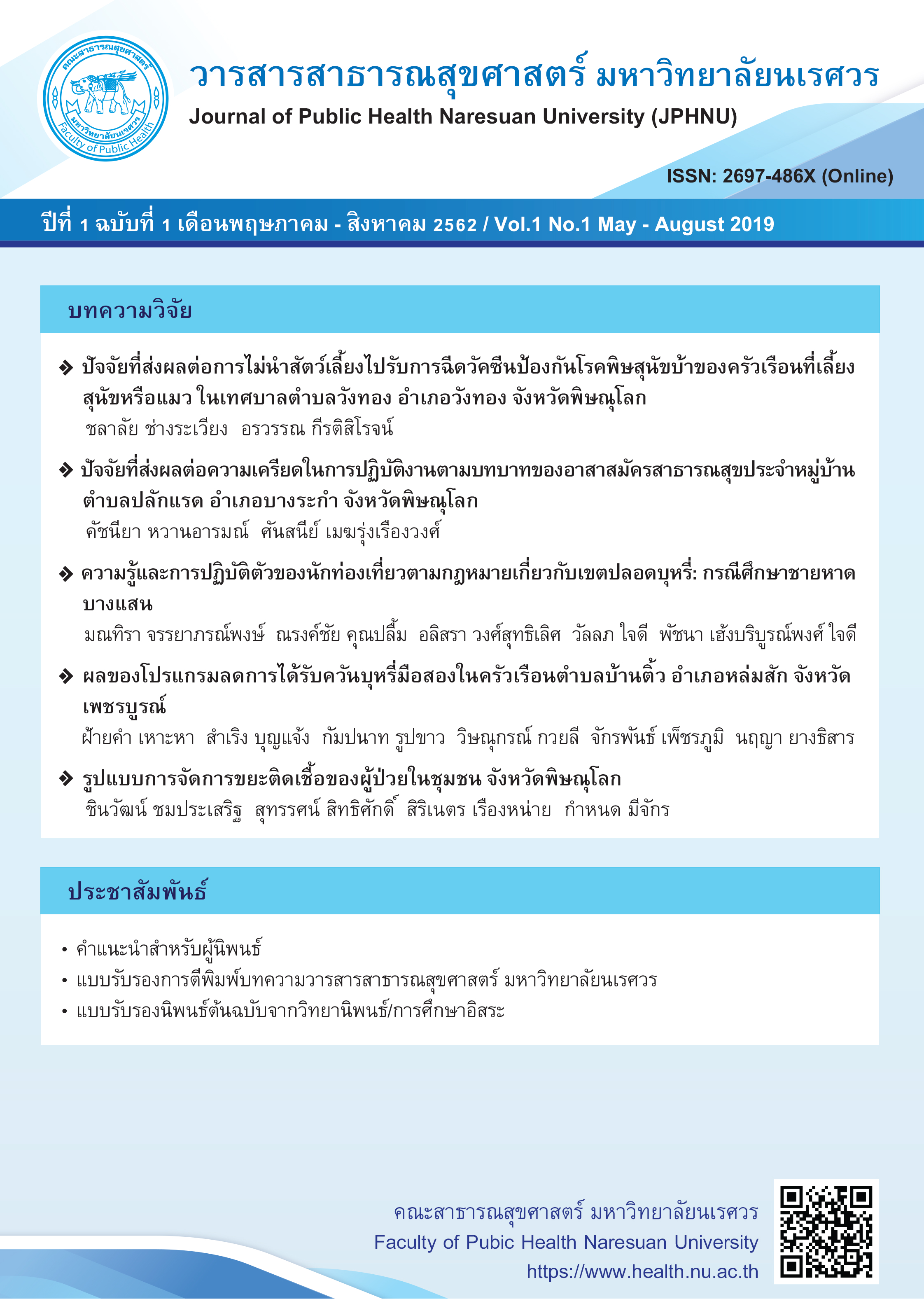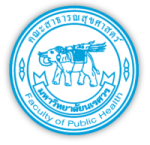Factors affecting to non-taking pets for rabies vaccination of households that feed dogs or cats in Wang Thong Subdistrict Municipality, Wang Thong District,Phitsanulok Province.
Keywords:
Rabies, Vaccine, PetsAbstract
The objectives of this cross-sectional research were to study the behavior to taking pets for rabies vaccination and factors affecting to non-taking pets for rabies vaccination. The sample consisted of 139 people from the population who are the owners of pets in households that feed dogs or cats in Wang Thong Subdistrict Municipality, Wang Thong District, Phitsanulok Province. Data were collected using questionnaires that were tested for validity and reliability. Data were analyzed using descriptive statistics, including frequency, percentage, mean, standard deviation and inferential statistics, including logistic regression analysis. Statistical significance was set at the level of 0.05.
The results showed that most of the participants, 82.7%, brought pets to be vaccinated against rabies vaccination every year on schedule, followed by 11.5 percent, not vaccinated every year / not in accordance with the schedule and 5.8 percent never take pets for vaccination, respectively. Factors affecting non-taking pets to be vaccinated against rabies include being a student (Adjusted odds ratio = 12.83, p-value = 0.003) and perceiving obstacles (Adjusted odds ratio = 1.23, p-value < 0.001). This study suggests that the government should facilitate pet owners to taking rabies vaccination so that pets can receive comprehensive vaccinations,especially in students.
References
Bureau of Disease Control and Veterinary Services. (2017). Information system for rabies surveillance. Retrieved November 5, 2017, from https://www. thairabies.net/trn/Default_Main.aspx. (in Thai)
Bureau of Disease Control and Veterinary Services. (2019).Local Rabies-Free Area Project, 2019.Retrieved May 12, 2019, from https://dcontrol.dld.go.th/webnew/index.php/th/news-menu/2018-07-04-04-12-47/rabies/1792-2562-5. (in Thai)
Daniel, W. W. (1995). Biostatistics: A Foundation for Analysis in the Health Sciences.(6 th Edition). New York: Wiley Global Education.
Department of Disease Control, Ministry of Public Health, Thailand. (2013). Strategic plan to eliminate rabies from Thailand within 2020. Nonthaburi: Graphic and Design Publishing House. (in Thai)
Department of Livestock Development, Ministry of Agriculture and Cooperatives, Thailand. (2019). Number of animal heads detected rabies and number of deaths from rabies, 1978-March 2018.Retrieved May 12, 2019, fromhttps://www.dld.go.th/th/index.php/th/newsflash/ status-report/rabies-menu/rabiesnews-menu/15808-rabies-25610425-2. (in Thai)
Keidkawinphong, M. (2008). Influencing factors of rabies non-immunized people with dogs or cat bites.
Medical Journal Sisaket, Surin, Buriram Hospital, 23(2), 759-770. (in Thai)
Manning, S. E., Rupprecht, C. E., Fishbein, D., Hanlon, C.A., Lumlertdecha, B., Guerra, M. et al. (2008).
Human rabies prevention-United States: Recommendation of the Advisory Committee on immunization practices. Morbidity and Mortality Weekly Report, 57(RR-3),1-28.
Meunghara, T., & Srithanachai, P. (2010). Factor influencing the acceptance for rabies vaccination by dog owners in Ladkrabang Bangkok Metropolitan.Bangkok: National Research Council of Thailand. (in Thai)
Puanghat, A., Theerawitthayalert, R., & Thanacharoenrat. N. (2010). Knowledge, attitude and practice of Thai people in prevention and control of rabies. Disease Control Journal,36(1), 50-59. (in Thai)
Puyati, B., Senayai, S., Chanachai, K., & Panichabhongse, P. (2016). Epidemiological and genetic characteristics of rabies virus in UbonRatchathani Province, Thailand, 2011-2014. Outbreak, Surveillance and Investigation Reports, 9(1), 8-14. (in Thai)
Rakpanit, S. &Vaeteewootacharn, K. (2018). Factors associated with dog owner's behavior on rabies prevention in Muang District, Buriram Province. Journal of Nursing and Health Care, 36(2), 158-166. (in Thai)
World Health Organization. (2018). Rabies vaccines: WHO position paper-April 2018. Weekly Epidemiological Record,16(93), 201-220.
Downloads
Published
How to Cite
Issue
Section
License
The published article is copyrighted by the Journal of Public Health and Health Sciences Research.
The statements that appear in each article in this academic and research journal are the personal opinions of each author and are not related to Naresuan University and other faculty members in the university. Responsibilities regarding each article are the responsibility of each author.






